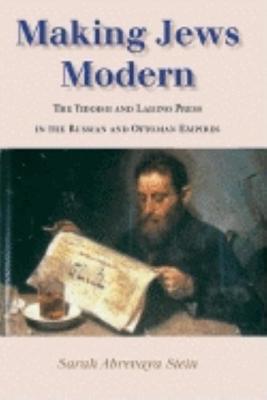The Modern Jewish Experience
1 total work
On the eve of the twentieth century, Jews in the Russian and Ottoman empires, were caught up in the major cultural and social transformations that constituted modernity for Ashkenazi and Sephardi Jewries, respectively. What language should Jews speak or teach their children? Should Jews acculturate, and if so, into what regional or European culture? What did it mean to be Jewish and Russian, Jewish and Ottoman, Jewish and modern? To understand the ways in which Russian and Ottoman Jews formulated and answered these questions in the process of remaking themselves as modern, Sarah Abrevaya Stein explores the texts most widely consumed by Jewish readers: popular newspapers in Yiddish and Ladino. Examining the press' role as an agent of historical change, "Making Jews Modern" interrogates a diverse array of verbal and visual texts culled from Yiddish and Ladino newspapers, including cartoons, photographs, and advertisements.
This comparative study of Russian and Ottoman Jewries yields new perspectives on larger issues, such as the role of print culture in imagining national and transnational communities and the diverse ways in which modernity was envisioned in different contexts and specifically under the rule of empire. This original and lively comparative exploration of Sephardi and Ashkenazi cultures enriches our sense of cultural life under the rule of multiethnic empires, and complicates our understanding of Europe's polyphonic modernities.
This comparative study of Russian and Ottoman Jewries yields new perspectives on larger issues, such as the role of print culture in imagining national and transnational communities and the diverse ways in which modernity was envisioned in different contexts and specifically under the rule of empire. This original and lively comparative exploration of Sephardi and Ashkenazi cultures enriches our sense of cultural life under the rule of multiethnic empires, and complicates our understanding of Europe's polyphonic modernities.
